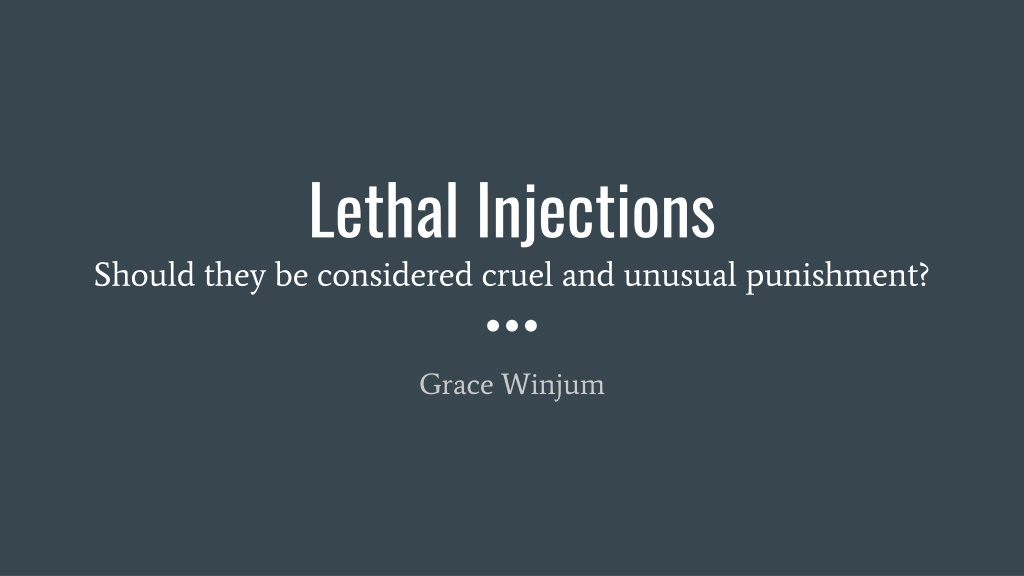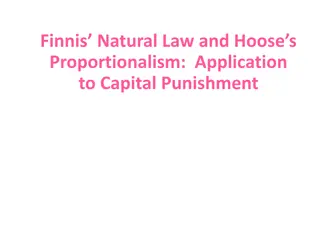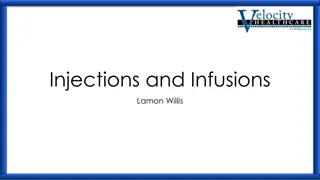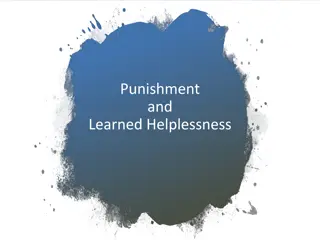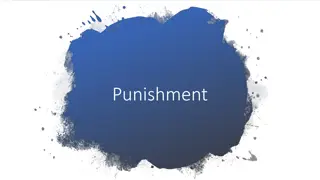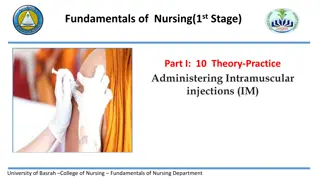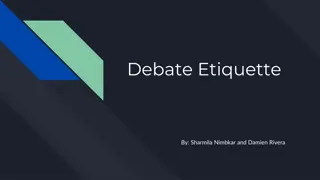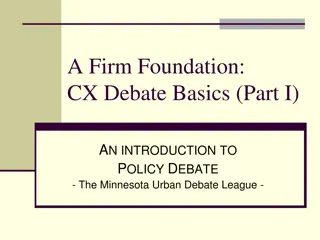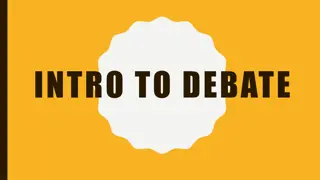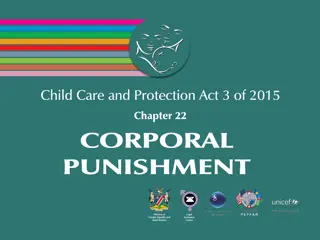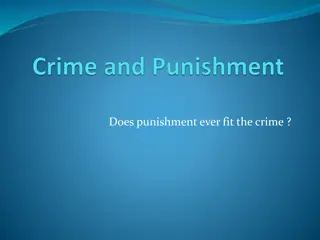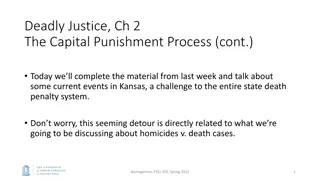The Debate Over Lethal Injections in Capital Punishment
Lethal injections have become a controversial method of capital punishment, with the debate focusing on their legality, ethics, and effectiveness. Over the years, the drugs used in lethal injections have changed due to drug shortages, leading to concerns about botched executions and prolonged suffering. Alternative execution methods exist in states where lethal injections are not feasible. The discussion around lethal injections raises questions about cruelty, human rights, and the pursuit of justice in the criminal justice system.
Download Presentation

Please find below an Image/Link to download the presentation.
The content on the website is provided AS IS for your information and personal use only. It may not be sold, licensed, or shared on other websites without obtaining consent from the author. Download presentation by click this link. If you encounter any issues during the download, it is possible that the publisher has removed the file from their server.
E N D
Presentation Transcript
Lethal Injections Should they be considered cruel and unusual punishment? Grace Winjum
What Are Lethal Injections? A lethal injection is typically a combination of three drugs injected into the body as a means of capital punishment. Until 2009 almost all lethal injections consisted of an anesthetic (oftentimes sodium thiopental, until pentobarbital started being used in 2010 after Hospira stopped producing sodium thiopental), pancuronium bromide (which acts as a paralytic and is also known as Pavulon), and potassium chloride which causes death by stopping the heart.
How have Lethal Injections Changed Through the Years? New drug shortages forced many states to alter their lethal injection protocol and use drugs other than the combination listed on the previous slide. Eight states now carry out lethal injections with the use of one drug, a deadly dose of anesthetic. Six other states have announced plans to use the single drug method but have not yet done so. Another form of lethal injection recently adopted using pentobarbital in executions, and fourteen states have used this method. The third new method is using midazolam as the first drug in the three drug protocol. Finally, two states have used fentanyl.
What Problems do these New Techniques Create? With the use of these new drugs in lethal injections, there have been multiple instances of botched operations. The use of Midazolam in particular has created a controversy because of its failures. Of the six states that have used this drug in the three drug procedure, five of them have resulted in prolonged and painful executions and Florida has abandoned the use of the drug. The use of this drug on people has made them gasp for air, convulse, and jerk around for close to fifteen minutes in some cases. In Oklahoma, the use of Midazolam on Clayton Lockett resulted in a botched operation that was halted but caused his death afterwards regardless.
What Other Options Are There? Some states allow for alternate forms of execution should there be a drug shortage or if it is deemed impractical to use the method of lethal injection. 1. 2. In Tennessee they can use the electric chair 3. Utah allows use of firing squad if lethal injection drugs can t be found 30 days before the execution 4. New Hampshire and Washington law allows death by hanging 5. 19 states don t allow the death penalty Alabama, Mississippi, and Oklahoma all allow the use of nitrogen hypoxia
The Final Option? The death penalty is illegal in 19 states and Washington DC. There are 31 states that do not have a ban on it. The large majority of countries in the world have abolished the death penalty and the US is now the most developed country to continue its use. Of the countries ranked as very high in the Human Development Index, only four countries continue its use: the US, Taiwan, Japan, and Singapore. The EU is largely against it and because they were the primary source of lethal injection drugs in the past, it was their resistance that contributed to the shortage of these drugs and the experimental ones that some states have turned to.
Why is there Debate About Lethal Injection? Some people view lethal injections to be a form of cruel and unusual punishment violating the eighth amendment. They base these opinions on the facts that lethal injections contain three constitutional defects including its unreliability, its arbitrary application, and long delays that undermine its purpose.
Is there any Precedent to Question it Constitutionally? In the 2015 case Glossip V. Gross, the Supreme Court held that Oklahoma prisoners "failed to establish a likelihood of success on the merits of their claim that the use of midazolam violates the Eighth Amendment." The prisoners claimed that the drug didn t work to stop the pain of the three drug protocol, but Justice Alito stated that the prisoners had to identify a known method with a lesser risk of pain. The dissenting opinion formed by Justice Breyer and Bader Ginsburg asked for a trial on the constitutional issue of the death penalty.
Any More Precedent? In 2008 the Supreme Court ruled in Baze V. Rees in a 7-2 decision that Kentucky s three drug protocol does not constitute a cruel and unusual punishment and violate the eighth amendment. In the 2006 case Hill V. McDonough the court favored Clarence Hill, a death row prisoner, by ruling that such prisoners could challenge the method of execution in a civil rights case, but not the death penalty as a whole.
What is Cruel and Unusual Punishment? The Eighth Amendment states: Excessive bail shall not be required, nor excessive fines imposed, nor cruel and unusual punishments inflicted. This clause prohibits the government from imposing unduly harsh penalties on criminal defendants. Cruel and unusual is a vague term that opens itself up to much debate. The inclusion of this phrase in the Bill of Rights was intended to prevent the government from using cruel and unusual punishments to oppress the people. This extends to state powers as well now under the 14th amendment. Many argue that the death penalty violates the Eighth Amendment and does no public good, and again the argument is made the the three drug combination could be considered a barbaric punishment, what the cruel and unusual phrase was intended to prevent.
Citations http://news.gallup.com/poll/11716/lethal-injections-cruel-unusual-punishment.aspx https://deathpenaltyinfo.org/state-lethal-injection https://deathpenaltyinfo.org/lethal-injection-constitutional-issue https://www.huffingtonpost.com/martha-rosenberg/is-lethal-injection- cruel_b_5635616.html https://constitutioncenter.org/interactive-constitution/amendments/amendment-viii https://www.google.com/search?q=lethal+injection+stats&rlz=1CADEAF_enUS780US7 80&source=lnms&tbm=isch&sa=X&ved=2ahUKEwiH0KPJmrDaAhURFnwKHfcXAIw Q_AUoA3oECAAQBQ&biw=1366&bih=630&safe=active&ssui=on#imgrc=MXoopv9- f_-YXM:
